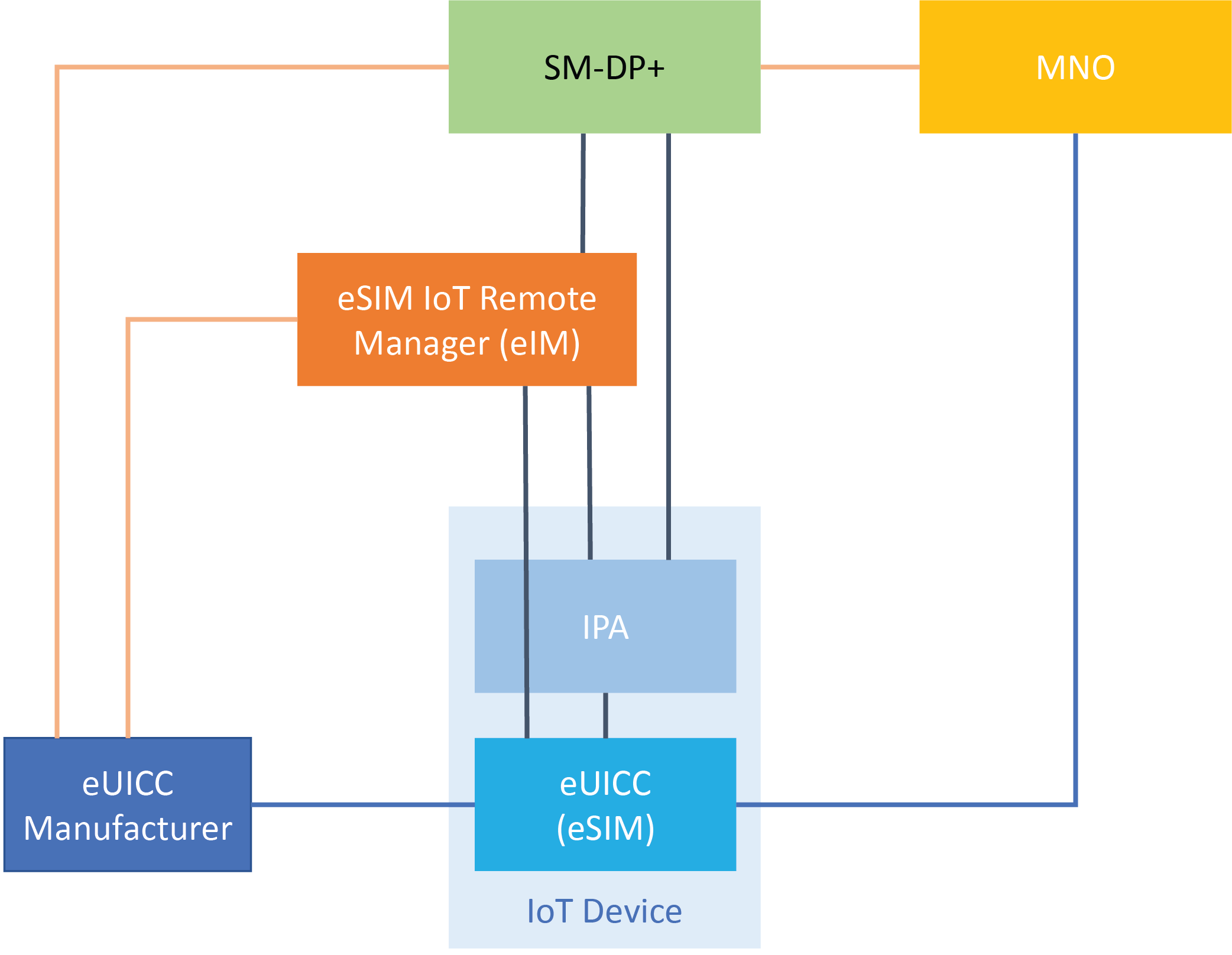Fueling Momentum with Secure
IoT Connectivity
This kind of approach has been examined by the standards bodies with the outcome of the establishment of GSMA Work Group 7 (WG7) for remote provisioning of “eUICCs in Network Constrained and/or User Interface (UI) Constrained IoT Devices” (SGP.31).
In short, WG7 is adapting the current Consumer eSIM Standard (SGP.22) to provide the capability to manage an IoT device remotely (Figure 3, below). They added an eSIM IoT Remote Manager component to the architecture that interacts with the device and allows for remote management. The LPA is replaced with an IPA (IoT Profile Assistant) that allows the eSIM to be provisioned by the SM-DP+. This greatly reduces the time to market for IoT deployments and provides companies with the same flexibility and control that consumers have. However, this new approach will only be available in a few years because it takes time for standards to be formalized and approved for use.

Figure 3: WG7 Adaptation
In the meantime, the market is offering several solutions based on pre-standard technology. Methods are being developed to remotely control and configure the LPA via a dedicated management portal, replacing the user interaction required in the current Consumer Standard. This allows enterprises to order consumer eSIM subscriptions in bulk from any cellular carrier with a SM-DP+ server. They can then upload the activation codes into a portal to provision the profiles remotely to the eSIM. Rules for managing the profiles can be configured, such as which carrier profile to use in each deployment location and defining a fallback profile in the event of connectivity loss with the default profile. The eSIM communicates with the carrier’s SM-DP+ server to download and activate the subscription. The IoT connectivity will follow the defined rules, adhering to regulatory compliance requirements if present, and automatically swapping between wireless carriers as needed. This makes IoT connectivity simple and scalable.
Now, with the development of new eSIM technology, IoT’s true potential can be realized. The conditions are available for IoT deployments to enable great cellular connectivity in every location, which can be managed and changed based on the business need. This ensures continuous connectivity throughout the lifetime of the device and is more tolerant to ecosystem unpredictability.



















